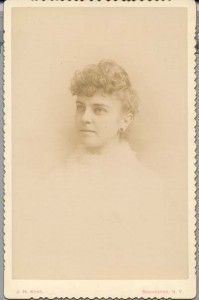 Born August 13, 1862
Born August 13, 1862
Birthplace Macedon, NY
Died November 24, 1951
Grave Site Unknown
Emma Biddlecom was born in Macedon (Wayne County), New York on August 13, 1862. She was a cousin of Susan B. Anthony, and is best known as Anthony’s secretary during the last years of the famous suffragist’s life.
She married Fred G. Sweet and lived in Rochester, New York. Emma Sweet was an active member of the Unitarian Church under its pastor William C. Gannett and his wife, Mary Gannett. In the early 1890s, she served as secretary of its “Social Topics Class,” a division of the Unity Club. The Class, a discussion group, studied topics such as city government, public education reform, tax reform, labor unrest, race relations, divorce, co-education, and Populism. (Populism is the political doctrine that supports the rights and powers of common people in their struggle with the privileged elite.) The Class had a reserve bookshelf at the Reynolds Library (which later became part of Rochester Public Library).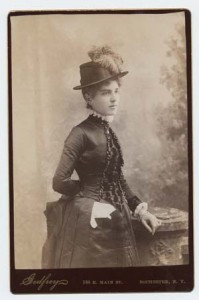
By the mid-1890s, Susan B. Anthony, overwhelmed by the large amount of administrative work and correspondence, hired Sweet as her secretary. Ida Husted Harper, Anthony’s biographer, sets the date of Sweet’s hire as October 1, 1895, while her obituary in the Democrat and Chronicle states that she began work as Anthony’s secretary in 1894. Sweet served intermittently in this role until Anthony’s death, in 1906.
The next year, Sweet accompanied Anthony on her travels to California to work on the suffrage campaign being waged in that state. They left Rochester on February 27, 1896, stopped over in Ann Arbor to attend Michigan’s convention, and made another stop in Chicago prior to arriving in California. There, Anthony “donated” Sweet’s entire time (she was paid $75 per month by Anthony) to the California suffrage cause. Sweet worked in that state’s suffrage headquarters for seven months.
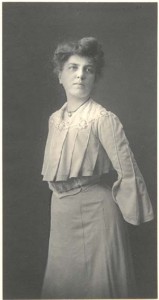 During her tenure as Anthony’s secretary, Sweet made numerous campaign trips throughout the United States. Twice she traveled abroad to Europe to attend women’s suffrage conventions. She also helped to organize conventions on the home front. When the New York State Women’s Suffrage Association held its annual meeting in Rochester in 1905, Sweet chaired the committee that arranged for “the business and the pleasure of the meetings.”
During her tenure as Anthony’s secretary, Sweet made numerous campaign trips throughout the United States. Twice she traveled abroad to Europe to attend women’s suffrage conventions. She also helped to organize conventions on the home front. When the New York State Women’s Suffrage Association held its annual meeting in Rochester in 1905, Sweet chaired the committee that arranged for “the business and the pleasure of the meetings.”
Sweet also held various offices in Rochester’s Political Equality Club, founded in 1885 as the Women’s Political Club by Mary S. Anthony. Mary Anthony’s estate contained a letter acknowledging Sweet’s leadership in this organization. Written in 1906, less than a year before Mary Anthony’s death, the letter expressed her “desire”
that one thousand dollars ($1000) be given to Mary T.L. Gannett, Mary Thayer Sanford and Emma B. Sweet, to be used as an Emergency Fund, at their discretion, to further the work of the Rochester Political Equality Club.
Sweet remained active in a leadership role in the Political Equality Club when, under Carrie Chapman Catt’s statewide and national direction, it reorganized as the Monroe County Woman Suffrage Party in the decade prior to ratification of the federal amendment for women’s suffrage.
Sweet also served on the executive committee of the Susan B. Anthony Memorial Association, as assistant to the corresponding secretary. This association was formed shortly after the death of the suffrage leader with the purpose of raising funds to erect a building in Anthony’s name for the use of women at the University of Rochester.
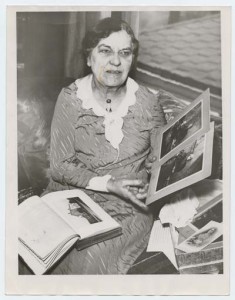 Sweet was especially active in the suffrage cause during the years immediately prior to the passage of the Nineteenth Amendment. She organized meetings, opened headquarters, passed out literature and circulated petitions during multiple state suffrage campaigns, until women in New York finally received the vote in 1918. After this victory, Sweet turned her activities toward passage of the federal amendment to the Constitution. Unlike other parts of the State and the country, she and other Rochester suffragists were unfortunately unsuccessful in establishing a local League of Women Voters until the 1920s. Later in her life, however, she would serve as an honorary president of this group.
Sweet was especially active in the suffrage cause during the years immediately prior to the passage of the Nineteenth Amendment. She organized meetings, opened headquarters, passed out literature and circulated petitions during multiple state suffrage campaigns, until women in New York finally received the vote in 1918. After this victory, Sweet turned her activities toward passage of the federal amendment to the Constitution. Unlike other parts of the State and the country, she and other Rochester suffragists were unfortunately unsuccessful in establishing a local League of Women Voters until the 1920s. Later in her life, however, she would serve as an honorary president of this group.
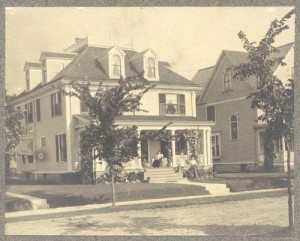 Sweet also achieved professional acclaim in areas unrelated to women’s suffrage. She was one of the few women of the time to serve in a position of responsibility at a bank, as Custodian of Vaults and Director of Safe Deposits at the Security Trust Company. In 1933, she was appointed to a national committee that protested against the persecution of Jews in Germany.
Sweet also achieved professional acclaim in areas unrelated to women’s suffrage. She was one of the few women of the time to serve in a position of responsibility at a bank, as Custodian of Vaults and Director of Safe Deposits at the Security Trust Company. In 1933, she was appointed to a national committee that protested against the persecution of Jews in Germany.
Emma Biddlecom Sweet died of a stroke at the age of eighty-nine on November 24, 1951. Her body was bequeathed to the Medical School at the University of Rochester.
Bibliography of Suggested Books & Articles
- “Certain Unalienable Rights,” newspaper article, ca. 1946, with photo of Sweet with SBA’s rocking chair.
- “Emma Sweet Dies; Assisted Miss Anthony,” Democrat and Chronicle, Rochester, NY, Monday, November 26, 1951, p. 19.
- History of Woman Suffrage, v. V (1900-1920), Harper, Ida Husted, ed., National American Woman Suffrage Association, 1922 (reprint Source Book Press, 1970)
- Harper, Ida Husted, The Life and Work of Susan B. Anthony, vols. II and III, Indianapolis, The Hollenbeck Press, 1908.
- McKelvey, Blake, “Susan B. Anthony,” Rochester History, v. VII, no. 2 (April 1945).
- McKelvey, Blake, “Women’s Rights in Rochester: A Century of Progress,” Rochester History, v. X, nos. 2 & 3 (July 1948).
- McKelvey, Blake, “Women’s Rights in Rochester: A Century of Progress,” Rochester History, v. X, nos. 2 & 3 (July 1948).
- Pease, William H., “The Gannetts of Rochester: Highlights in a Liberal Career, 1889-1923,” Rochester History, v. XVII, no. 4 (October 1955).
Bibliography of Suggested Web Sites
- Emma Biddlecom Sweet Papers
- Unitarian Church Papers collected by Emma Biddlecom Sweet
- Report of the Woman’s Rights Convention
- Upstate New York and the Woman’s Rights Movement